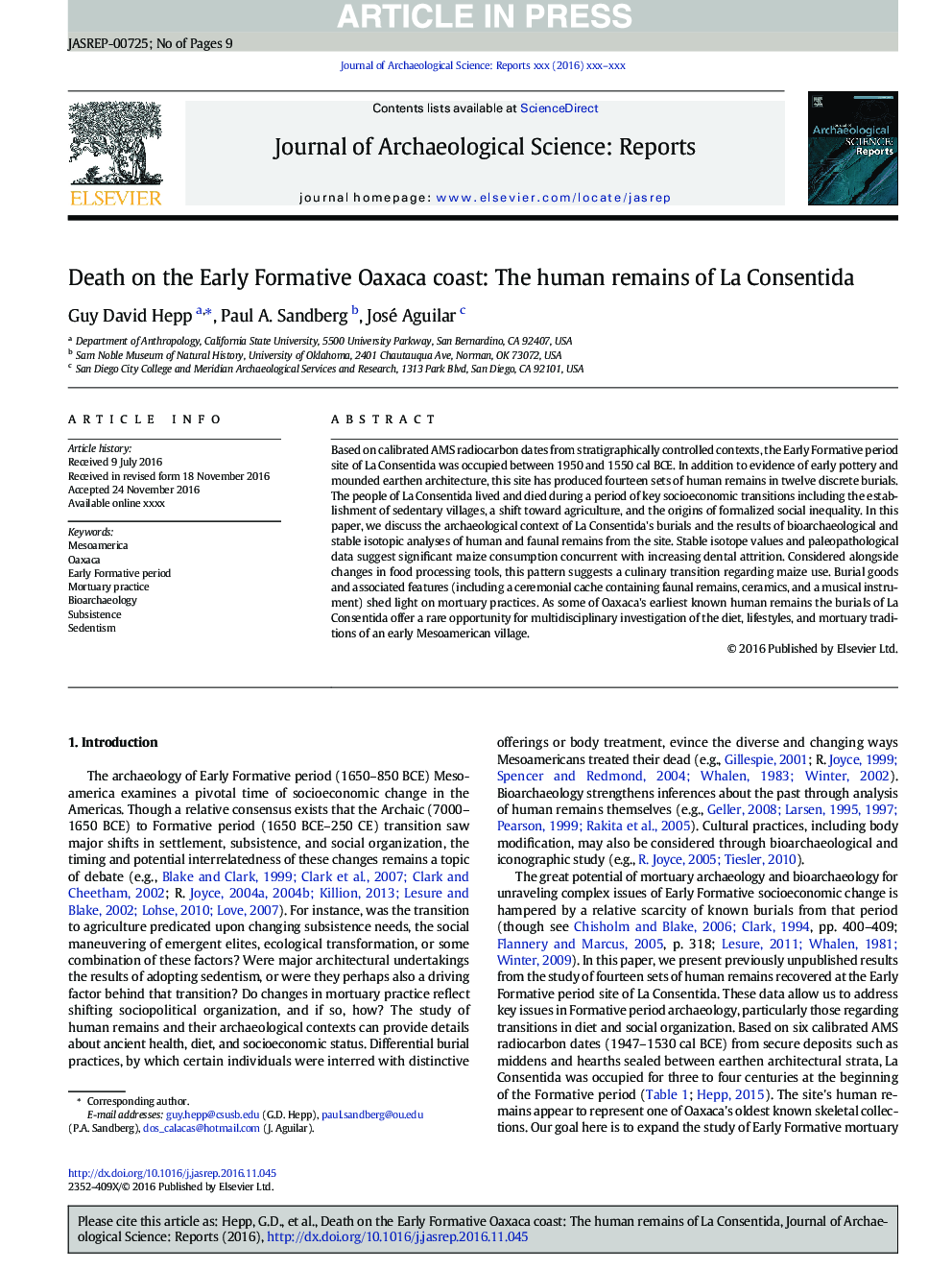| Article ID | Journal | Published Year | Pages | File Type |
|---|---|---|---|---|
| 5112383 | Journal of Archaeological Science: Reports | 2017 | 9 Pages |
Abstract
Based on calibrated AMS radiocarbon dates from stratigraphically controlled contexts, the Early Formative period site of La Consentida was occupied between 1950 and 1550 cal BCE. In addition to evidence of early pottery and mounded earthen architecture, this site has produced fourteen sets of human remains in twelve discrete burials. The people of La Consentida lived and died during a period of key socioeconomic transitions including the establishment of sedentary villages, a shift toward agriculture, and the origins of formalized social inequality. In this paper, we discuss the archaeological context of La Consentida's burials and the results of bioarchaeological and stable isotopic analyses of human and faunal remains from the site. Stable isotope values and paleopathological data suggest significant maize consumption concurrent with increasing dental attrition. Considered alongside changes in food processing tools, this pattern suggests a culinary transition regarding maize use. Burial goods and associated features (including a ceremonial cache containing faunal remains, ceramics, and a musical instrument) shed light on mortuary practices. As some of Oaxaca's earliest known human remains the burials of La Consentida offer a rare opportunity for multidisciplinary investigation of the diet, lifestyles, and mortuary traditions of an early Mesoamerican village.
Related Topics
Social Sciences and Humanities
Arts and Humanities
History
Authors
Guy David Hepp, Paul A. Sandberg, José Aguilar,
